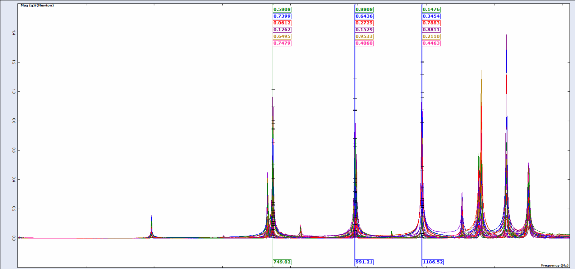Modal Testing using Modal Shakers
Modal Testing is carried out to understand the dynamic behavior of structures. The procedure is to excite the structure or device under test (DUT) with a force of known frequency and amplitude. The response is then analyzed by measuring the output of strategically placed accelerometers. Using the data acquired from the accelerometers, a modal model of the structure or DUT can be constructed. From the derived model, modal parameters, including resonant frequencies, mode shapes, and damping values can be determined.
Sentek Dynamics’ MS Series permanent magnet modal shakers and Crystal Instruments’ EDM Modal software are key ingredients in building accurate modal models. Sentek Dynamics’ modal shakers are available in forces ranging from 50 to 1000 N (11 to 225 lbf). In addition to the required shaker force, another factor to consider is the structure or DUT's frequency response function (FRF), which can be calculated by dividing the response of the structure (measured with the accelerometers) by the excitation force (provided by a shaker).
To ensure a good excitation force, the test engineer must ensure:
Selection of appropriate modal shaker
Accurate test setup
Proper and secure placement of accelerometers.
Applications of Modal Shakers:
Aerospace
Automotive
Marine – Surface and underwater
Medical devices and life sciences Instrumentation
Structures - Civil, mechanical, etc.
Modal Analysis Results
Mode Shapes



